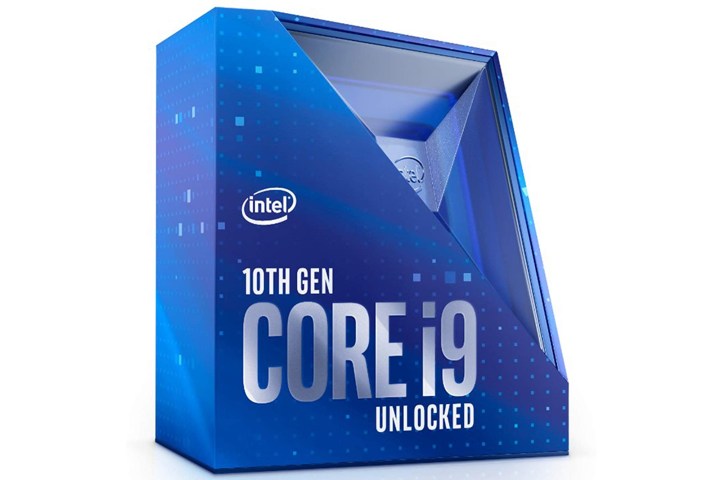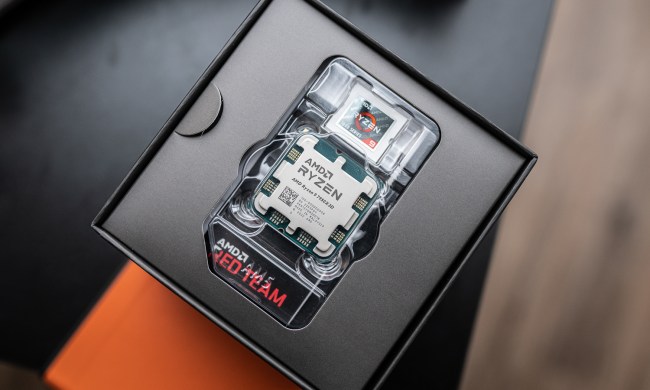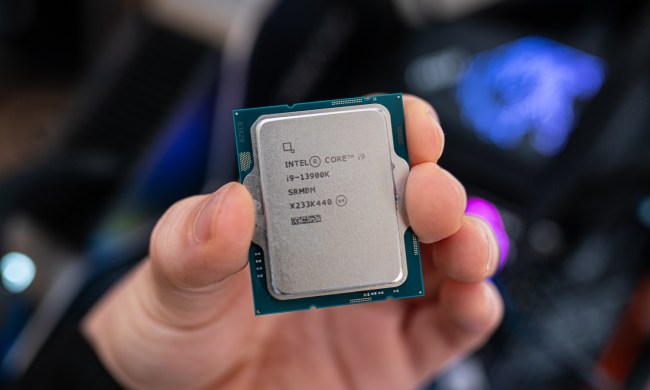When it debuted, the Intel Core i9-10900K faced stiff challenges from not only AMD’s best alternatives, but also Intel’s last-generation powerhouse, the eight-core Core i9-9900K. One-upping the best gaming CPU in the world is a tall order, especially since the 10900K was stuck on the same 14nm process as its predecessor.
Now that it’s out in the wild, though, with Intel crowning it the new gaming king, how does the Core i9-10900K stand up to its last-generation counterpart?
Pricing and availability

The MSRP of both CPUs is $499, and you can indeed buy the Core i9-9900K for that price. However, its counterpart without the onboard GPU — the 9900KF — is a much more viable option at a comparably cheap $380. Its next-generation counterpart is much more problematic, however. The Core i9-10900K is so hard to find that it regularly sells for between $550 and $600.
The other obstacle to your PC upgrade is that Core i9-10900K uses a new CPU socket called LGA1200 and will require a new-generation motherboard. Intel launched a slew of new 400-series chipsets with the 10 series, and you will find the high-end models all use the Z490 chipset to provide the maximum number of features. In addition, Z490 motherboards are built with expensive power delivery systems that support your Core i9-10900K while it runs those 10 cores at high clock speeds. A Z490 motherboard such as Asus ROG Maximus XII Hero (Wi-Fi) will cost around $400.
That’s not to say ninth-generation, high-end motherboards are cheap, though. The last-generation Asus ROG Maximus XI Hero (Wi-Fi) with a Z390 chipset costs $350.
The specs paint a pretty picture
The differences between the Core i9-9900K and 10900K are immediately apparent when looking at Intel’s own specifications. The Core i9-9900K has a base clock speed of 3.6GHz and an all-core boost of 4.7GHz, reaching even higher to 5.0GHz on a couple of cores at a time when performing single-threaded tasks. That helped it deliver cutting-edge gaming performance when it was released, but with increasing competition from AMD, Intel had to offer more with the new 10th-generation kingpin and at the same time prevent thermal meltdown.
That may sound like an impossible task, but Intel managed to deliver the Core i9-10900K with 10 cores/20 threads, an all-core boost clock of 4.9GHz, and a maximum single-core boost of 5.3GHz in limited thread tasks. This is partly thanks to a new feature called Thermal Velocity Boost that allows your Core i9-10900K to run at higher frequencies, provided the temperature is lower than 70 degrees Celsius. That does mean that if you can’t keep the temperature below 70 degrees, you can expect to see the speed drop by 200MHz. Without adequate cooling, Thermal Velocity Boost is more likely to be enjoyed for brief spikes of performance, particularly at the beginning of workloads and gaming sessions.
| Core i9-10900K | Core i9-9900K | |
| Cores | 10 | 8 |
| Threads | 20 | 16 |
| Base frequency | 3.7GHz | 3.6GHz |
| Max turbo frequency | 5.3GHz | 5.0GHz |
| Cache | 20MB | 16MB |
| TDP | 125W | 95W |
| CPU socket | LGA1200 | LGA1151 |
In essence, Intel created the Core i9-10900K by taking the Core i9-9900K and adding 25% more cores with a proportionate increase in TDP. When you consider the new Socket LGA1200 is physically the same size as the previous LGA1151, it becomes clear the thermal density has increased significantly. More power fed to more cores in the same area inevitably means more heat, which sounds like a problem in the making.
Fortunately, for those considering a new-generation, top-tier Intel CPU, it’s not (see below).
Performance: Games and productivity
Adding more cores and increasing clock speeds lead to a healthy bump in performance. A pure CPU test such as Cinebench R20 Multi-Core shows the Core i9-10900K scoring 6,360 marks at 4.9GHz and the Core i9-9900KF (a Core i9-9900K without integrated graphics) scoring 4,867 marks at 4.7GHz, which is an impressive 30% increase. In the Blender Classroom benchmark, the 9900K managed to complete it in 8 minutes and 49 seconds, while the Core i9-10900K took just 6 minutes and 40 seconds — a 24% boost.
Games rely more on the GPU than the CPU, especially at higher screen resolutions, and that’s something that the Core i9-9900K is already pretty darn good at. Upgrading to a Core i9-10900K may deliver an extra 1 frames per second or 2 fps at 1080p, but if you game at 4K, you are unlikely to be able to tell the two CPUs apart. One exception to that rule is Shadow of the Tomb Raider, which does an amazing job of using extra hardware resources — here, you are likely to see a benefit between 1 fps and 7 fps, which is interesting but hardly dramatic.
Power and thermals
You can expect to see the Core i9-10900K drawing around 200W under load in Auto Mode, where the Core i9-9900K draws about 160W running the same workload. A mere 40W extra power means you are unlikely to require an upgrade to your power supply.
The 10900K manages that extra 40W well, too, because you’d expect it to make the processor run much hotter than the 9900K. But it doesn’t. Like the 9900K, the 10900K makes use of a soldered internal heat spreader rather than a more typical thermal interface material. On top of that, Intel has tackled the problem of moving heat from the internal die to the cooler by thinning the silicon die of the 10th-gen CPU. Silicon is an excellent conductor, but it’s also an excellent insulator that acts as a barrier to heat dispersion, so removing some silicon helps the heat to transfer more efficiently through the processor.
The copper heat spreader on the CPU package has been increased in thickness by the same 0.3mm, so the overall height of the CPU remains the same. This means you can use an LGA115x cooler on your LGA1200 build. A big air cooler will do the job, and so too will an All In One liquid cooler, at which point you should be pleasantly surprised to see the temperature of the Core i9-10900K is very similar to the figures we have seen with Core i9-9900K.
The 10900K is the new king, but last-gen power lasts
Intel Core i9-10900K is a significant upgrade over Core i9-9900K, but adding two more cores with each new generation is the very definition of incremental improvement. Intel’s 10th-gen is so similar to the ninth-gen that you can carry across your power supply, CPU cooler, and DDR4 memory, but you will need a new LGA1200 motherboard to support your new Core i9-10900K — therefore, expect to face an upgrade cost of over $700.
We have another caveat to add before you make your buying decision, which is that Intel is still using PCI Express generation three at a time when Nvidia has launched RTX 3000 using the PCI Express generation-four interface, and AMD moved to generation four some time ago. Intel has gone on the record to say 11th-gen Rocket Lake will arrive in March 2021 with support for generation four, so Intel is currently between a rock and a hard place.
At least you’ll be able to carry over your motherboard to that generation.
All that besides, while the Core i9-10900K isn’t an impressive revolution, it is a somewhat impressive evolution. Nobody, Intel included, expected its 14nm process to last this long, and the fact that in 2020 it can steam along at 4.9GHz on all cores and Turbo as high as 5.3GHz is an amazing achievement. These are phenomenal speeds, and the Core i9-10900K delivers an immense experience. Gamers will find that Core i9-9900K does a very similar job, though, and professionals who need pure CPU grunt should consider AMD’s Ryzen CPUs, too.




